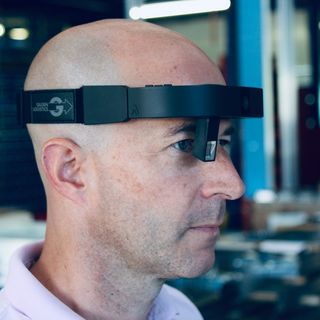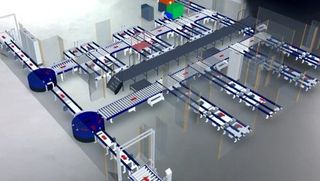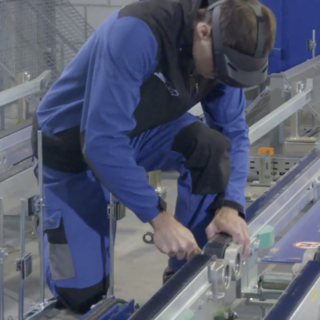Augmented Reality
Walk Virtually Through the Facility and Support in Maintenance
The applications of Augmented Reality are varied. From support in sales to faster response times in the event of disruptions, the entire process is covered.Daniel Fricker, Head of Innovation & Development, is working with his team to continuously implement new development steps towards the digitalisation of intralogistics systems.
Digitalisation in the workplace has become a given for many companies. In the planning and engineering of logistics facilities, digitalisation is already well advanced.>
At Gilgen Logistics, digitalisation is deeply embedded in the entire process.
Augmented Reality makes digitalisation visible and can support work in various ways.

Walk Virtually Through the Facility
Gilgen Logistics AG already uses Augmented Reality in the sales process.Faster Response Times
Fast response times and thus short plant downtime are a crucial success factor in intralogistics.For more complex maintenance and repair work, service technicians can be assisted by specialists at Gilgen's headquarters using Augmented Reality and "Voice over IP" technology. This saves significant time and costs, as long travel times are eliminated. When an AR headset is used instead of a smartphone, the technician even has both hands free to work.

AR is much more than just a gimmick. The information and communication technology already offers many possibilities that we are not yet fully exploiting in our facilities. We want to change this.
Daniel Fricker, Head of Innovation & Development
Technology from the Gaming and Streaming Industry
For this project, several relatively new and complex IT technologies need to be combined:For data exchange, several network servers are required. On the one hand, this ensures a continuous data flow for 3D synchronisation. Since this exchange must function with very low latency, software used for multiplayer online games is also employed. On the other hand, the two clients (AR headset and browser app) need to be linked. For real-time communication, technology known from video conference tools is used. This allows web browsers and the AR headset to directly exchange video and audio streams. The AR headset is connected to the internet via WLAN.
GS1 Standards
Each installed element carries a unique QR code. All data related to this element can be accessed from the database in the cloud. The QR code is created according to GS1 Switzerland standards . This has the crucial advantage that if the link in our own system changes, the QR code continues to function. These translations provide the information about the application of GS1 standards for QR codes, emphasizing the operational continuity even if system links change.
Development Partners
With the Institute of Business Informatics at the University of Applied Sciences Northwestern Switzerland and the Computer Perception & Virtual Reality Lab of the Institute for Human-Centered Engineering at the Bern University of Applied Sciences, Gilgen Logistics has found valuable partners for the development. Additionally, the project was supported by Innosuisse, the Swiss Agency for Innovation Support.
Almer Technologies AG, the Bern-based start-up, is our partner for the AR headset and ensures ongoing development of the application.









